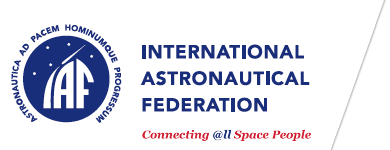session 8
- Title
Show Us Space: Demonstration of Hands On Education and Outreach
- type
oral
- Description
Presenters in this session will demonstrate effective hands-on activities and experiments to explore, teach and reinforce space-related concepts. Hands-on space education and outreach is a powerful way to introduce and teach space concepts and Science, Technology, Engineering, Arts and Math (STEAM) concepts, especially with diverse learners. During the session, presenters will not only present the ideas behind the activity, but also physically demonstrate it hands-on and engage the session audience at the IAC. Note: A physical in-person demonstration of the activity is mandatory for this session. If you would like to make a presentation only, please submit your abstract to a different session. Submissions that cannot be physically demonstrated on-site (for example CubeSats) will be rejected. When submitting abstracts for SEOC sessions, please: • Clearly identify the hands-on nature of the work presented, how the audience at the IAC will sample this work, and its space connection. • Include any special technical requirements you will need for your demonstration such as “live webcam connection to remote location”, “four long tables for audience members to gather around to build a model”, or “ability to be near a window to view the sky for the demonstration.” • Clearly identify the connection to the session’s described scope and to space. • Briefly describe what you will present, including results and evaluation of your work, if it has been completed, or a thorough description of the expected outcomes of the work. • Include information about what makes your work unique, original or innovative and worth sharing with the international space community. • State your work’s goal, the intended audience, the measurable objectives that were set, and if the work is in planning or has already occurred. • Provide context describing the research and/or analysis you conducted in choosing the purpose of the activity, the intended audience, and the design of the activity. • Include reference to quantitative or qualitative data gathered through evaluations, surveys or other means. • If any theories are developed, please include information about the practical applicability of the information. • Consider that your audience is international and focus on what others working in the field can learn from your work. Include lessons learned, recommendations or other takeaway messages. • Make sure that the abstract provides a coherent idea or narrative for someone unfamiliar with your work.
- Date
2025-10-03
- Time
- Room
- IPC members
Co-Chair: Ms. Lyn Wigbels, American Astronautical Society (AAS), United States;
Co-Chair: Ms. Valerie Anne Casasanto, NASA Goddard/University of Maryland, Baltimore County (UMBC), United States;
Co-Chair: Mr. Remco Timmermans, International Space University (ISU), United Kingdom;
Co-Chair: Mr. Marcos Eduardo Rojas Ramirez, Space Generation Advisory Council (SGAC), France;
Order | Time | Paper title | Mode | Presentation status | Speaker | Affiliation | Country |
|---|---|---|---|---|---|---|---|
1 | 10:15 | An Effective Tool for Space Awareness:Hands-on Activity with Tardigrades | 20 | confirmed | Mr. Akın Karahasan | Gokmen Space and Aviation Training Center (GUHEM) | Türkiye |
2 | 20 | withdrawn | Dr. Kristina Otero | Aldrin Family Foundation | United States | ||
3 | 10:35 | 20 | confirmed | Mr. Miracle Chibuzor Chibuzor | Nigeria | ||
4 | 10:55 | 20 | confirmed | Mrs. SALAM ABUALHAYJA'A | Jordan | ||
5 | 11:15 | 20 | confirmed | Ms. Mollie Johnson | Massachusetts Institute of Technology (MIT) | United States | |
6 | 11:35 | 20 | confirmed | Mr. Takuya Yokoyama | JGC Corporation | Japan | |
7 | 11:55 | 20 | confirmed | Mr. Chris Yi Yuan | Innovaspace UK | China |
